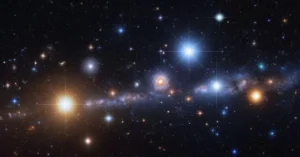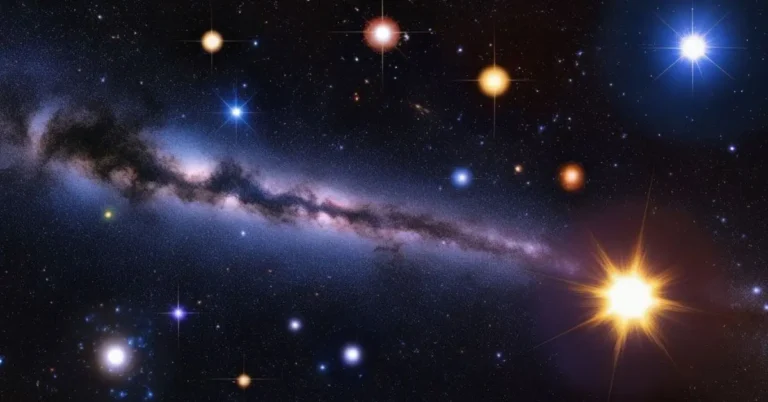The universe is a vast expanse filled with countless stars, each a beacon of light in the darkness of space. Over the centuries, humanity has sought to understand these celestial bodies, classifying them into various categories based on their characteristics. The term “Charstar” has emerged as a significant concept in the ongoing efforts to categorize stars, combining the intricate details of star classification with modern technology and research.
In this article, we will explore the concept of Charstar, its origins, significance in the field of astronomy, and its implications for future research. We will also delve into the technological advancements that have made Charstar a pivotal tool in the study of stars and how it shapes our understanding of the cosmos.
The Genesis of Charstar
The classification of stars has a rich history dating back to ancient civilizations. Early astronomers used the naked eye to observe the sky, identifying stars and constellations. With the invention of the telescope in the 17th century, a new era of star observation began. Scientists could now study stars in greater detail, leading to the development of star classification systems.
The modern classification of stars, known as the Hertzsprung-Russell diagram, was developed in the early 20th century. This diagram plots stars based on their luminosity and temperature, categorizing them into different types such as main-sequence stars, giants, and white dwarfs. However, as technology advanced, so did the need for more precise and detailed classifications.
Charstar is a concept that emerged from the intersection of traditional star classification methods and modern computational techniques. The term “Charstar” is derived from “Characterized Star,” reflecting the idea that these stars are classified not just by basic parameters like temperature and luminosity, but by a more comprehensive set of characteristics that include chemical composition, age, rotation speed, and more.
The Science Behind Charstar
Charstar represents a paradigm shift in how we classify stars. Traditional methods rely on observational data, which can be limited by the resolution of telescopes and the distance of the stars. In contrast, Charstar leverages advanced computational models and large datasets to create a more detailed and accurate classification system.
One of the key components of Charstar is the use of machine learning algorithms. These algorithms analyze vast amounts of data collected from telescopes, satellites, and space probes. By identifying patterns and correlations in this data, machine learning models can classify stars with a high degree of accuracy. This approach allows astronomers to identify subtle differences between stars that may not be apparent through traditional methods.
For example, two stars may have similar temperatures and luminosities, but their chemical compositions might differ significantly. These differences can provide valuable insights into the stars’ formation, evolution, and potential to host planetary systems. Charstar allows astronomers to identify these differences and classify stars accordingly.
The Role of Big Data in Charstar

The rise of big data has played a crucial role in the development of Charstar. Modern telescopes and space missions generate enormous amounts of data, far more than can be analyzed manually. Charstar relies on big data analytics to process this information and extract meaningful patterns.
One notable example is the Gaia mission, launched by the European Space Agency in 2013. Gaia’s primary goal is to create a three-dimensional map of the Milky Way by precisely measuring the positions, distances, and motions of over a billion stars. The data collected by Gaia is invaluable for Charstar, as it provides a wealth of information that can be used to classify stars in unprecedented detail.
By combining Gaia’s data with other sources, such as the Sloan Digital Sky Survey and the Kepler Space Telescope, Charstar can analyze a wide range of stellar characteristics. This holistic approach enables astronomers to classify stars based on multiple factors, leading to a more nuanced understanding of the stellar population in our galaxy.
Implications of Charstar in Astronomy
The introduction of Charstar has significant implications for the field of astronomy. By providing a more detailed and accurate classification system, Charstar enhances our understanding of the universe and its underlying processes. Here are some of the key implications:
1. Stellar Evolution
Charstar offers new insights into the life cycles of stars. By analyzing a star’s characteristics in detail, astronomers can better understand its formation, evolution, and eventual fate. This information is crucial for constructing models of stellar evolution and predicting the future of stars, including our own Sun.
2. Exoplanet Research
The search for exoplanets—planets orbiting stars outside our solar system—has become a major focus of modern astronomy. Charstar can aid in this search by identifying stars that are likely to host planetary systems. By classifying stars based on their potential to support life, Charstar helps narrow down the list of targets for exoplanet searches.
3. Galactic Archaeology
Galactic archaeology is the study of the history and formation of galaxies, including our own Milky Way. Charstar contributes to this field by providing detailed classifications of stars in different regions of the galaxy. This information helps astronomers reconstruct the history of the Milky Way and understand the processes that shaped it.
4. Dark Matter and Dark Energy
The study of dark matter and dark energy is one of the most challenging areas of modern astrophysics. Charstar’s detailed classification system can provide clues about the distribution of dark matter in galaxies. By analyzing the motions and characteristics of stars, astronomers can infer the presence of dark matter and its effects on galactic dynamics.
The Future of Charstar
As technology continues to advance, so too will the capabilities of Charstar. Future developments in artificial intelligence, quantum computing, and space exploration are likely to further enhance the precision and scope of star classification.
One promising area of research is the integration of Charstar with virtual observatories. Virtual observatories are online platforms that provide access to vast amounts of astronomical data from multiple sources. By combining Charstar’s classification system with the data available in virtual observatories, astronomers can conduct large-scale studies of stars and galaxies in real-time.
Additionally, future space missions, such as the James Webb Space Telescope and the European Space Agency’s PLATO mission, will provide even more data for Charstar to analyze. These missions are expected to reveal new types of stars and stellar phenomena, expanding our understanding of the universe.
Conclusion
Charstar represents a significant advancement in the field of astronomy, combining traditional star classification methods with modern computational techniques. By leveraging big data and machine learning, Charstar provides a more detailed and accurate classification system that enhances our understanding of stars and the cosmos.
As we continue to explore the universe, Charstar will play a crucial role in uncovering the mysteries of the stars. From stellar evolution to exoplanet research, Charstar’s contributions to astronomy are vast and far-reaching. The future of star classification is bright, and Charstar is leading the way into this new era of discovery.

